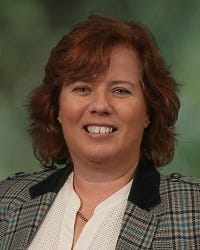How to Maintain Team Productivity Without Being Viewed as a ScroogeHow to Maintain Team Productivity Without Being Viewed as a Scrooge
‘Tis the season to be jolly. Unless, of course, you're a manager who's struggling to maintain staff productivity during the happiest time of the year.

It's that time of the year again. For many IT team members, the holiday season provides a welcome break to reflect on recent accomplishments and strengthen ties with family, friends, and colleagues. IT leaders, however, often view the year's final days somewhat differently. For them, it can also be a time of missed deadlines and collapsing productivity.
The holiday season can be a stressful time in our personal lives and compounding that stress in our work lives with year-end deadlines can be a recipe for disaster, says Emma McGrattan, senior vice president of engineering at hybrid data management software firm Actian. “There are few IT teams that can kick back and forget about work during the holiday period, so it’s incumbent on us as IT leaders to make it easy for our teams to be productive during this time.”
People Versus Productivity
Personal and professional lives often collide head-on during the holiday seasons, as employees attempt to simultaneously socialize and meet end-of-the-year work deadlines, says Brittany Lutes, an analyst at IT research firm Info-Tech Research Group. She observes that IT productivity is highly related to engagement. “If you want a productive team, engage them,” Lutes advises.
To ensure maximum engagement and productivity over the holidays, IT leaders should plan ahead, suggests Kaushik Ray, senior vice president, global client service management, at data recovery services provider Sungard Availability Services. “IT leaders must prepare for when their team will be out by either shifting workloads to other locations or preparing for reduced productivity if [they] don’t have that option,” he says.

Emma McGrattan, Actian
McGrattan observes that it's useful to encourage team members to incorporate inevitable distractions into their holiday plans. “By building that time into their flex schedule, they won’t feel guilty about time spent away from work projects,” she explains. “They will already know that an appropriate amount of work time is also built into their schedule.”
Offering managers and staff some type of flexible work arrangement can minimize year-end productivity losses, says AJ Jones, vice president of digital technology at Raytheon Intelligence & Space. “We recognize the work and life needs of employees, and we’re committed to providing flexibility to support the diverse needs of our team and business,” he notes. “We know that the term 'flexibility' can hold different meanings to different people and that’s why we provide a variety of flexible work arrangements, including flex time, compressed workweeks, and modified scheduling.” Jones adds that his organization seeks to help its teams become productive and feel connected, regardless of where each team member works. “Because of the strength of our IT teams, we enable our employees to do just that.”
Chris Mattmann, chief technology and innovation officer at NASA JPL, says his organization's policy is to allow managers and staff to take as much time they as they feel they need to be with their families. To compensate for the larger number of absentees, he recruits a minimal crew of managers and researchers “to keep the lights on” during the interim. “The goodwill earned by simply allowing people the space they need with their families obviates the minimal short-term productivity lost,” he observes.

Brittany Lutes, Info-Tech Research
Lutes recommends that managers should strive to become outcome-driven instead of time-driven, particularly during the holiday season. “This type of trust allows your employees to strengthen their relationship with their manager, meet key deliverables or metrics, and attend the many social gatherings that happen at this time of the year,” she says. “Doing this enables your employees to feel empowered, further enhancing their engagement with the organization.”
Mattmann believes that the greatest amount of employee distraction usually occurs when managers and teams return to their jobs just after the holidays. Getting them spun back up to a regular cadence can be a challenge, he admitted. “Lean in to meetings again; have some coordination meetings and then tactical and strategic,” he advises. “Give them a meaty project to begin the new year with, and also one that has some short-term wins that can get them going.”
Lessons Learned
Most IT leaders who were paying attention to their teams’ mental health during the COVID-19 pandemic probably noticed that empowering and trusting employees reduced a lot of stress, McGrattan says. “Lessons learned during that time will put us in good stead during future stressful times, such as the holiday season,” she notes.
As people leaders, IT chiefs need to think about their team members holistically and look for early indicators of stress and other issues that can impact their well-being,” McGrattan advises. “Health, especially mental health, is fragile, and once it’s fractured it's hard to put it back together again.”
What to Read Next:
About the Author
You May Also Like






